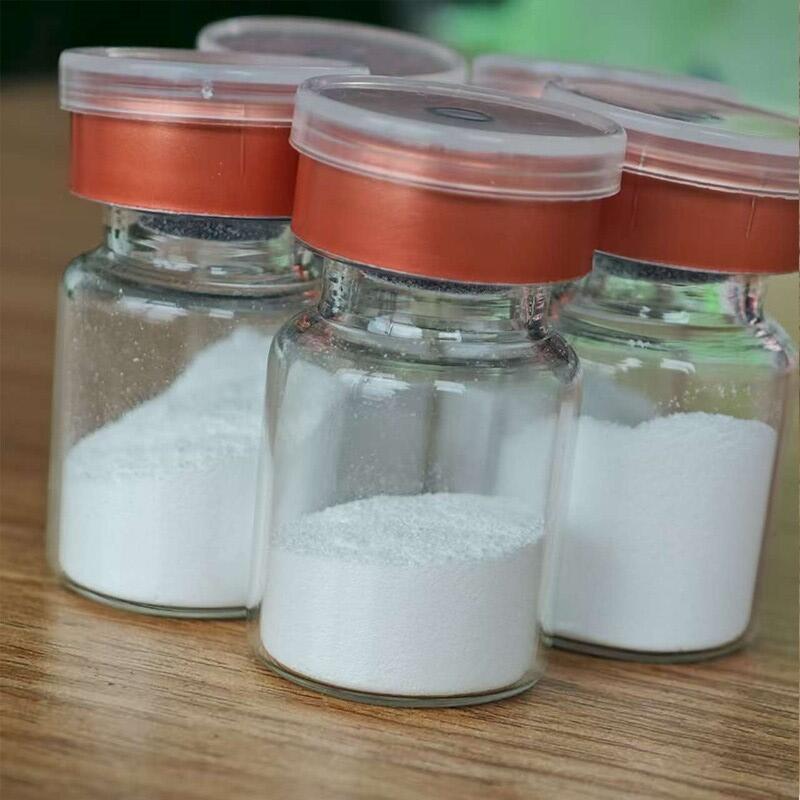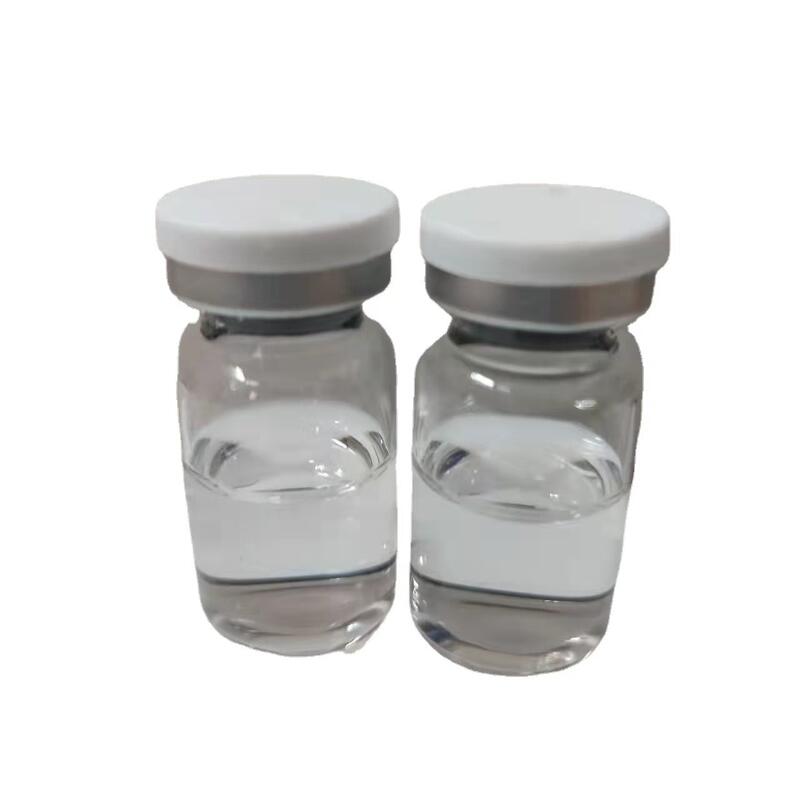-
Categories
-
Pharmaceutical Intermediates
-
Active Pharmaceutical Ingredients
-
Food Additives
- Industrial Coatings
- Agrochemicals
- Dyes and Pigments
- Surfactant
- Flavors and Fragrances
- Chemical Reagents
- Catalyst and Auxiliary
- Natural Products
- Inorganic Chemistry
-
Organic Chemistry
-
Biochemical Engineering
- Analytical Chemistry
-
Cosmetic Ingredient
- Water Treatment Chemical
-
Pharmaceutical Intermediates
Promotion
ECHEMI Mall
Wholesale
Weekly Price
Exhibition
News
-
Trade Service
The programmable CRISPR-Cas nuclease achieves genome editing by breaking double-stranded DNA at the target location, but it is very inefficient in cells after mitosis.
The base editor is a recently developed genome engineering tool that can perform precise and effective editing in tissues with low conversion rates.
For the clinical application of base editing, its main limitation lies in the generation of potential non-target mutations.
Non-target mutations can be single guide RNA (sgRNA) dependent or sgRNA independent, and are affected by the expression level and duration of the base editor.
In addition, in vivo base editing has not been confirmed in large animal models.
On May 19, 2021, Gerald Schwank of the Swiss Federal Institute of Technology Zurich and the team of Sean C.
Semple, a Canadian Acuitas treatment company, published an online publication entitled "In vivo adenine base editing of" in the international academic journal Nature-Biotechnology.
PCSK9 in macaques reduces LDL cholesterol levels" article, research shows that PCSK9 adenine base editing in macaques can reduce low-density lipoprotein (LDL) levels.
PCSK9, mainly expressed in the liver, is a negative regulator of LDL receptors.
The researchers used adenine base editing (ABE) to locate several typical PkcK9 splice sites in mouse Hepa cells to try to degrade the mRNA and protein of PkcK9, and finally determined that sgRNA_mP01 and sgRNA_hP01 are used in mice and cynomolgus monkeys, respectively.
In vivo experiments.
Subsequently, the researchers explored non-target mutations caused by long-term ABE expression, and evaluated non-target mutations in DNA and RNA at the molecular level.
Experiments show that the off-target effects of ABE mRNA are temporary, and are no longer detected on the 17th day after injection, and no off-target mutations are found in the genomic DNA.
These results indicate that editing of adenine bases in vivo is effective and safe, and may be used for the treatment of patients with inherited liver disease.
Finally, in order to further evaluate the feasibility of ABE in clinically relevant large animal models, the author edited PCSK9 in adult cynomolgus monkeys (cynomolgus monkeys).
Experiments have shown that ABE of rhesus monkeys can inhibit PCSK9 and thereby reduce blood LDL.
Moreover, unlike the mouse experiment, the specific IgG antibodies of SpCas9 and TadA were observed in rhesus monkeys, indicating a humoral immune response to ABE, which may be the reason why re-administration in rhesus monkeys did not increase editing.
In summary, this article studies the effectiveness and safety of ABEs in the liver of mice and cynomolgus monkeys in reducing blood low-density lipoprotein (LDL) levels.
The use of lipid nanoparticles to achieve the delivery of ABE-encoding genes and a single guide RNA targeting PCSK9 (negative regulator of LDL), which can achieve up to 67% base editing (an average of 61%) level in mice, and in rhesus monkeys Editing efficiency of up to 34% (26% on average) can also be achieved.
The contents of plasma PCSK9 and LDL decreased steadily by 95% and 58% in mice, and decreased by 32% and 14% in rhesus monkeys.
ABE mRNA can be cleared quickly, and no off-target mutations were found in the genomic DNA.
Re-administration of rhesus monkeys did not increase editing, which may be due to the humoral immune response to ABE after treatment.
Reference materials:
1.
https:// programmable CRISPR-Cas nuclease achieves genome editing by breaking double-stranded DNA at the target location, but it is very inefficient in cells after mitosis.
The base editor is a recently developed genome engineering tool that can perform precise and effective editing in tissues with low conversion rates.
For the clinical application of base editing, its main limitation lies in the generation of potential non-target mutations.
Non-target mutations can be single guide RNA (sgRNA) dependent or sgRNA independent, and are affected by the expression level and duration of the base editor.
In addition, in vivo base editing has not been confirmed in large animal models.
On May 19, 2021, Gerald Schwank of the Swiss Federal Institute of Technology Zurich and the team of Sean C.
Semple, a Canadian Acuitas treatment company, published an online publication entitled "In vivo adenine base editing of" in the international academic journal Nature-Biotechnology.
PCSK9 in macaques reduces LDL cholesterol levels" article, research shows that PCSK9 adenine base editing in macaques can reduce low-density lipoprotein (LDL) levels.
PCSK9, mainly expressed in the liver, is a negative regulator of LDL receptors.
The researchers used adenine base editing (ABE) to locate several typical PkcK9 splice sites in mouse Hepa cells to try to degrade the mRNA and protein of PkcK9, and finally determined that sgRNA_mP01 and sgRNA_hP01 are used in mice and cynomolgus monkeys, respectively.
In vivo experiments.
And by introducing different SpCas9-TadA constructs together with sgRNA_mP01 into the liver of mice, experiments showed that their plasma Pcsk9 levels and plasma LDL levels were significantly reduced.
And it induced up to 67% of edits in mice (61% on average), and up to 34% of edits in macaques (26% on average).
Plasma PCSK9 and LDL levels in mice decreased steadily by 95% and 58%, respectively, and rhesus monkeys decreased by 32% and 14%.
Subsequently, the researchers explored non-target mutations caused by long-term ABE expression, and evaluated non-target mutations in DNA and RNA at the molecular level.
Experiments show that the off-target effects of ABE mRNA are temporary, and are no longer detected on the 17th day after injection, and no off-target mutations are found in the genomic DNA.
These results indicate that editing of adenine bases in vivo is effective and safe, and may be used for the treatment of patients with inherited liver disease.
Finally, in order to further evaluate the feasibility of ABE in clinically relevant large animal models, the author edited PCSK9 in adult cynomolgus monkeys (cynomolgus monkeys).
Experiments have shown that ABE of rhesus monkeys can inhibit PCSK9 and thereby reduce blood LDL.
Moreover, unlike the mouse experiment, the specific IgG antibodies of SpCas9 and TadA were observed in rhesus monkeys, indicating a humoral immune response to ABE, which may be the reason why re-administration in rhesus monkeys did not increase editing.
In summary, this article studies the effectiveness and safety of ABEs in the liver of mice and cynomolgus monkeys in reducing blood low-density lipoprotein (LDL) levels.
The use of lipid nanoparticles to achieve the delivery of ABE-encoding genes and a single guide RNA targeting PCSK9 (negative regulator of LDL), which can achieve up to 67% base editing (an average of 61%) level in mice, and in rhesus monkeys Editing efficiency of up to 34% (26% on average) can also be achieved.
The contents of plasma PCSK9 and LDL decreased steadily by 95% and 58% in mice, and decreased by 32% and 14% in rhesus monkeys.
ABE mRNA can be cleared quickly, and no off-target mutations were found in the genomic DNA.
Re-administration of rhesus monkeys did not increase editing, which may be due to the humoral immune response to ABE after treatment.
These findings provide support for the further use of ABE to treat patients with liver disease with single gene mutations.
(Biological Exploration)
Reference materials:
1.
https://







